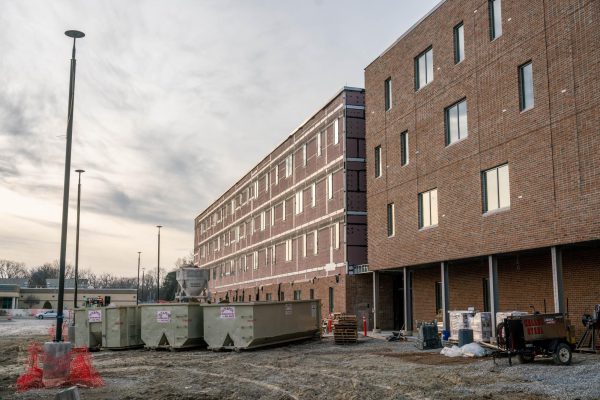Allyship Panel Discusses Anti-Asian Violence
The College organized teach-ins and panel discussions this week to educate students on the rise in anti-Asian and anti-Asian American violence. The allyship programs came in the aftermath of the March 16 shooting in Atlanta, in which eight people, including six Asian women, were killed.
On Monday, the Department of Comparative American Studies and the Presidential Initiative on Racial Equity and Diversity hosted a teach-in, featuring student and faculty panelists. The Multicultural Resource Center also hosted a panel discussion on Wednesday in support of Asian and Asian-American communities.
Monday’s panel featured both faculty and students speaking about their experiences with racism. One of the student speakers was College third-year Elise Steenburgh, who gave a speech on their personal experiences with racism from being half Ede — an ethnic minority group from southern Vietnam. They spoke on Monday about being othered in childhood and an “objectifying” encounter where a Brazilian boy said they should be “flattered that a nice Brazilian boy like him thought they had pretty, likable, and ‘exotic’ features.”
For Steenburgh, the shooting brought back those memories.
“I could not stop looking at these articles and getting more and more upset,” they said. “I would just remember my past experiences being racialized.”
Chair of the Comparative American Studies Department and Professor of Comparative American Studies and History Shelley Lee moderated the MRC’s Wednesday panel discussion, which featured alumni of Asian and Pacific Islander descent. She expressed horror that the shootings happened, but was not surprised given the increase of anti-Asian rhetoric over the past year.
“I felt Trump and others normalized and gave people permission to lash out at people they thought were Chinese or people they viewed were foreign,” Lee said.
Lee also discussed the concept of the “model minority” myth for Asian Americans, who are deemed successful because of stereotypes that Asian Americans earn higher incomes, have high levels of education, and have careers in medical and engineering professions.
Looking forward, Lee hopes that the recent efforts to address anti-Asian sentiment at Oberlin will continue.
“I hope this recommits the College to revitalizing the MRC and implementing changes that recognize Asian Americans on campus,” Lee said.
College third-year Danny Valero attended the panel on Wednesday to seek support in the face of anti-Asian-American sentiment but left the event with some critiques.
Valero acknowledged education as a necessary step against anti-Asian violence, but believes the panel did not sufficiently account for how deeply ingrained white supremacy is in America. He has also attempted to create educational programs for white people regarding Asian-American issues.
“Although I am for educating people and meeting them where they are at in their knowledge of this issue, I think we also have to recognize that there are some people who chose not to listen,” Valero said.
Valero also hopes for more intersectional approaches to anti-Asian racism.
“Outright violence is more likely to occur against working-class Asian people as well as the disabled and the elderly,” he said. “Special advocacy and protection for the most vulnerable in our community are what is needed.”
Nevertheless, Lee intended the panel discussion to be an opportunity for Asian-American alumni to connect with students.
Hans Chou, a third-year student speaker at Monday’s teach-in, shared how the College plans to respond to the rise in anti-Asian sentiment and violence.
While Chou questioned how to change attitudes outside the Oberlin bubble, he is hopeful about the events that faculty, student organizations, and the MRC are coordinating on campus for April.
Outside of the events organized by faculty and the College, students have also been working to address anti-Asian hate on campus. Immediately following the shooting, Steenburgh opened a Zoom dialogue on anti-Asian American and Pacific Islander racism.
“I had created a little graphic about having an open dialogue about anti-AAPI racism,” Steenburgh said. “I think because [Professor Lee] saw that I was so engaged to open that space, she wanted me to speak on the panel.”
In difficult moments, Steenburgh finds hope in the people around them.
“Oftentimes, we feel so alone in these tragedies,” Steenburgh said. “But there are communities out there that are willing to stand with you and people that you can lean on that you might not have known before.”
Steenburgh is part of the Asian-American Alliance, which plans to have its first meeting April 10 at noon.
Students who experience an incident that makes them feel uncomfortable or unsafe should report it to Campus Safety at (440) 775-8444. Students are also encouraged to seek support from the Counseling Center, the MRC, the International Student Resource Center, or the Office of Equity, Diversity, and Inclusion.






